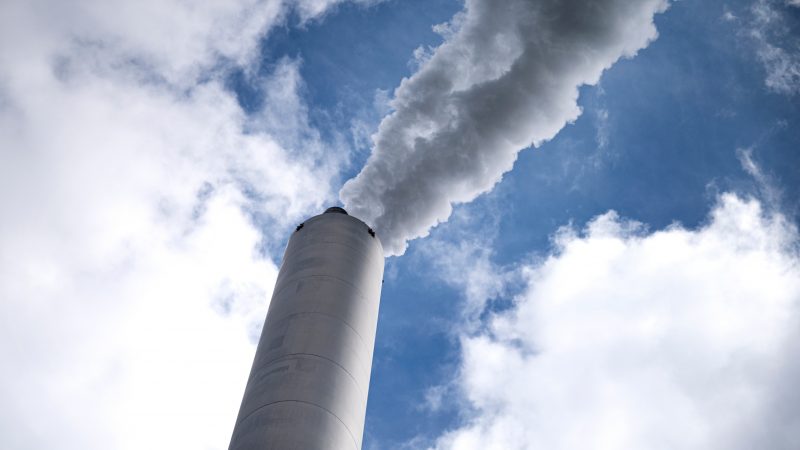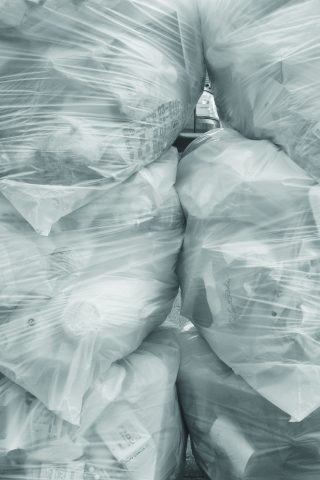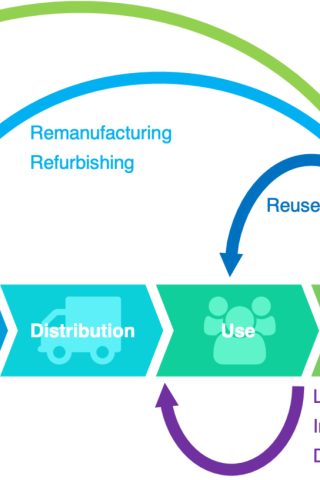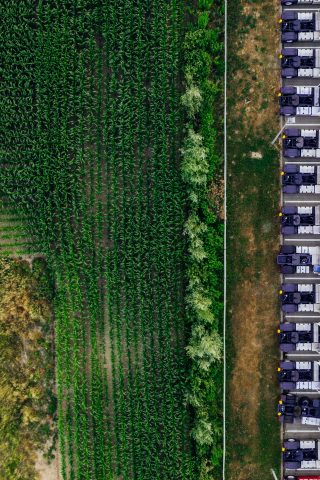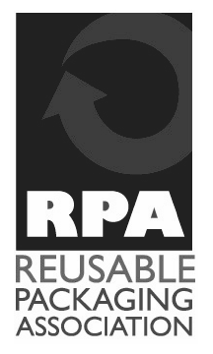Despite the initial impression that carbon capture and storage would be a good idea to reduce emissions from waste incineration plants, the climate will not benefit from this, argue Mick Wallace and Janek Vähk.
Mick Wallace is an Irish MEP from the Left political group in the European Parliament. He sits on the environment committee, where he was a shadow rapporteur for the EU’s Circular Economy Action Plan. Janek Vähk is climate, energy and air pollution coordinator at Zero Waste Europe, an environmental NGO.
Recently there has been a lot of discussion on having Carbon Capture and Storage (CCS) systems on Waste-To-Energy (WTE) plants as a way to mitigate the sector’s burgeoning impact on climate. Some have even asked the Commission to fund those e.g via the EU Innovation funds.
At first glance, having CCS systems on WTE plants may look like a reasonable idea, after all the sector’s emissions upward trend is clearly troubling – increasing by 288% between 1990 and 2017, according to a recent report by EEA.
However, CCS projects only make environmental and economic sense, if they address truly unavoidable emissions, meaning the release of CO2 that we cannot stop in any way.
But is this really the case for WTE plants?
Let’s look at some of the reasons why this is not true for WTE incineration.
For starters, residual waste is not just a bunch of valueless items. On the contrary, a report by the EU Technical Expert Group on Sustainable Finance indicates that most of what is currently in the ‘residual’ waste stream is readily recyclable, meaning a significant proportion of what is currently incinerated could have been recycled or composted. Recovering those materials would have a positive reduction of carbon emissions while having other environmental benefits, according to a recent report by Eunomia.
Experiences from countries that have applied CO2 tax (e.g. ETS) on incinerators show that this has pressured plant operators to engage with the issue of diverting plastic to recycling. Some plants have introduced ‘residual waste sorting’ facilities to separate out plastic waste but also some other materials. For example, Stockholm Exergi’s sorting facility in Sweden saves 33,000 tonnes of CO2 per year by sorting out the equivalent of approximately 75% of the plastic contained in the incoming waste.
If all residual waste were pre-treated properly, limiting residual waste to genuinely non-recyclable fraction, then it would free up much of the current residual waste treatment capacity, thus undermining the rationale for building CCS on the existing incineration capacities as the plants could quickly become stranded assets.
Additionally, focusing too much on the CCS could also undermine the goal in the new Circular Economy Action Plan to halve the residual waste generation by 2030, which would further limit the need for incineration with or without CCS.
Last but not least, there is also a risk that CCS would further contribute to the lock-in effect of waste incinerators. Many municipalities are signed up to long-term waste contracts that involve incineration. These contracts usually ensure that municipalities take on the primary risk of the incinerator not getting enough waste to burn, meaning municipalities are in effect penalised for not sending enough waste for incineration.
Contractual mechanisms such as ‘minimum tonnage guarantees’, ‘put-or-pay’ clauses and ‘banding mechanisms’ undermine the economic incentive to reduce, re-use and recycle even where funds are available.
Adding the costs of doing CCS would further increase the costs of incineration thus likely to exacerbate the lock-in effect of waste incinerators.
So what should we do instead?
Looking forward and reflecting on the above, it’s clear that a lot can be done to prevent greenhouse gas emissions from residuals: by improving separate collection systems and extending the scope of Extended Producer Responsibility schemes to cover materials not yet targeted by collection schemes. But above all, we need an overall policy framework that makes the reduction of residual waste a key priority. This was one of the key asks of the Parliament in its opinion report on the Circular Economy Action Plan.
Fundamentally, instead of focusing on waste as a potential source of energy, the focus must fall on how best to retain the energy which is embodied in the manufacture of materials and products, as well as reducing waste generation in the first place.
Progress should not be defined as an increase in the total quantity of commodities that we produce and consume each year. The aim of economies should be to satisfy the basic needs and wellbeing of all people within planetary boundaries – regardless if the economy grows or not.
